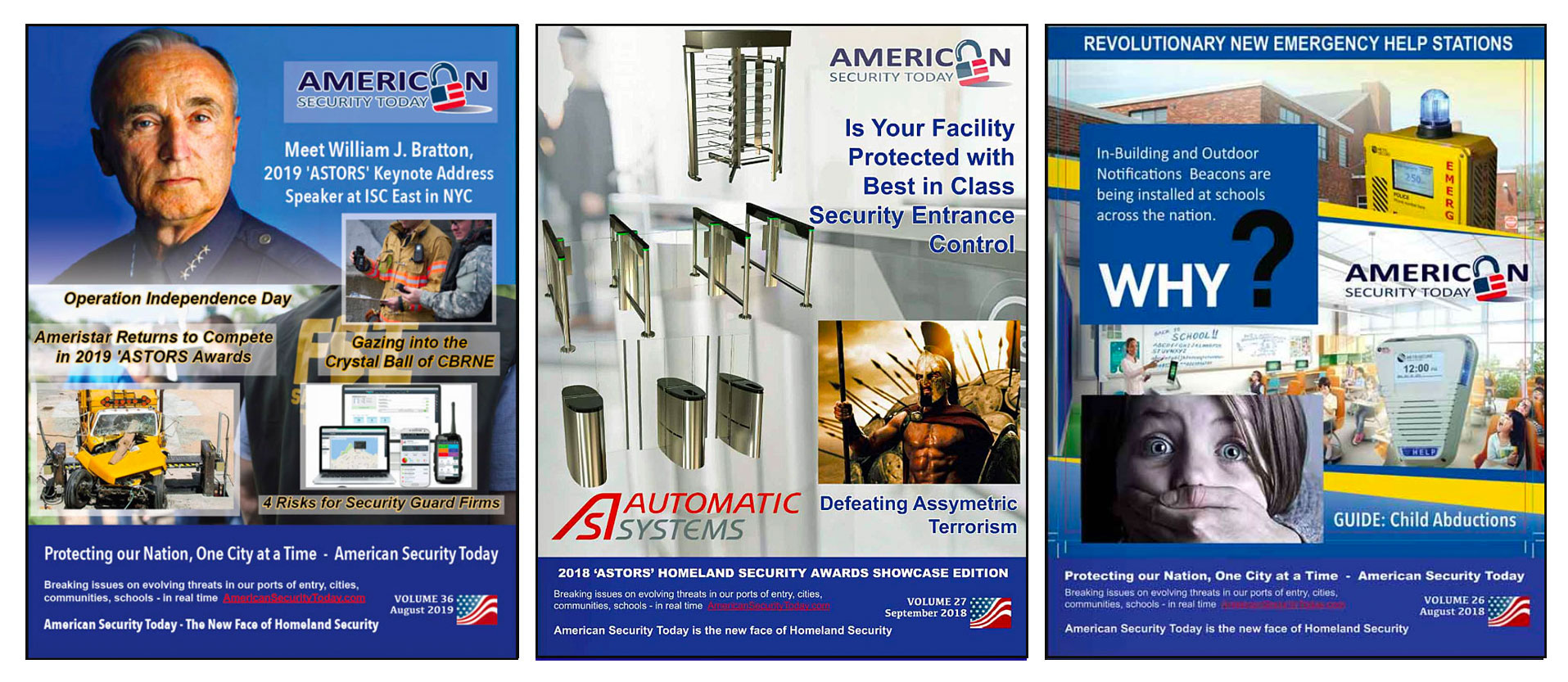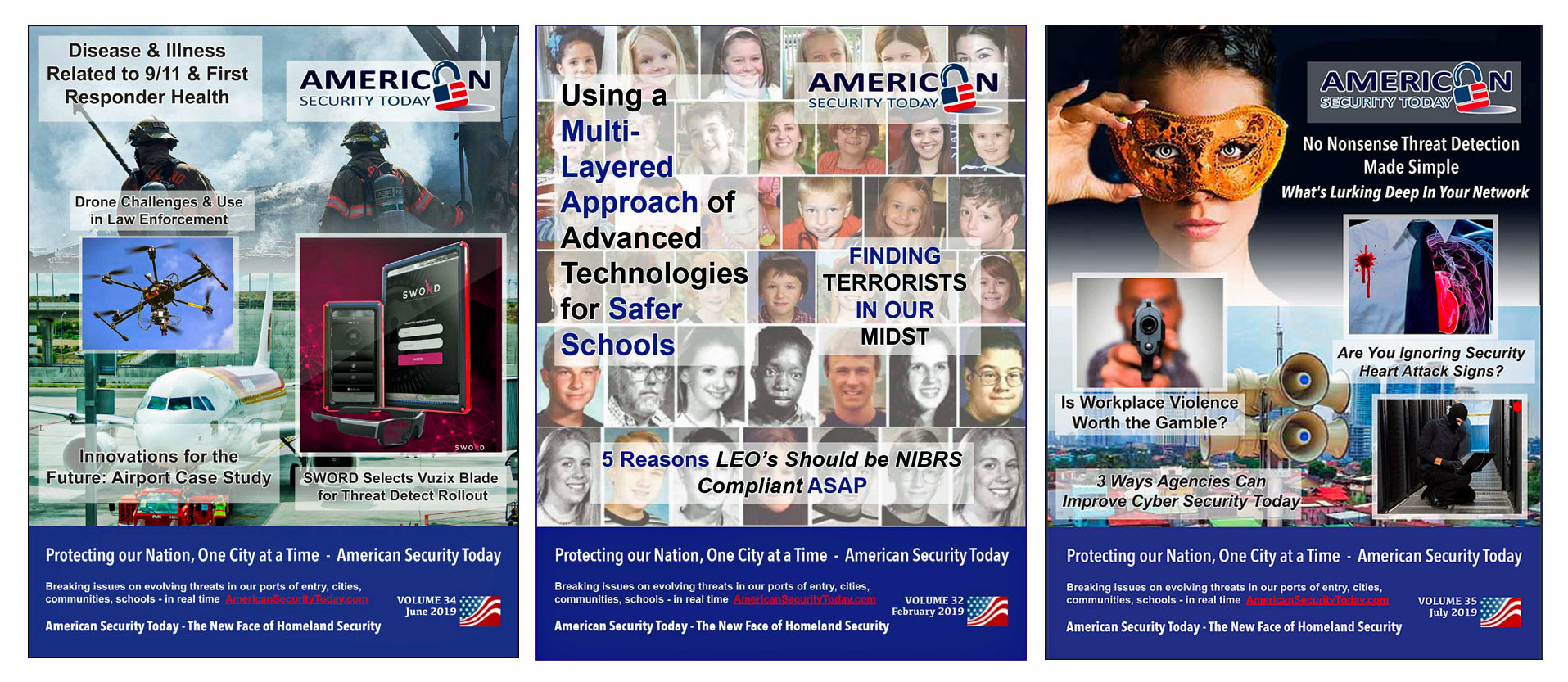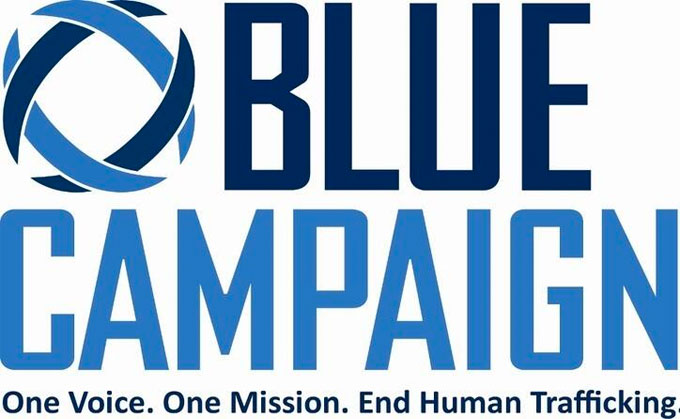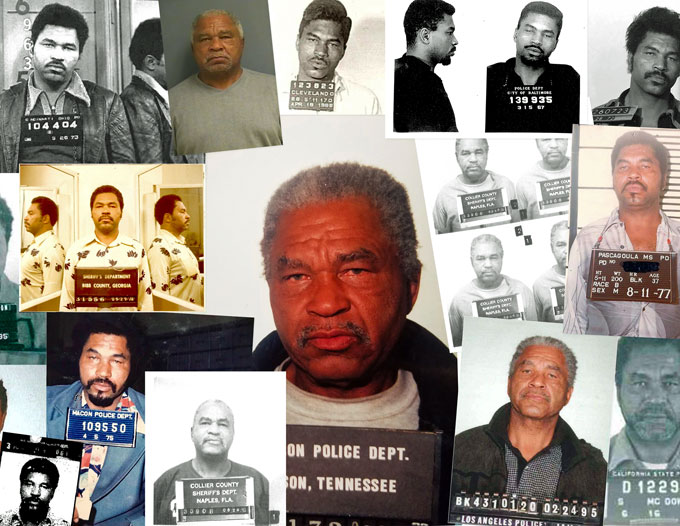
December 30, 2020 – In Breaking News – Fox News
Samuel Little, the country’s most prolific serial killer who confessed to more than 90 slayings, has died. He was 80.
The California Department of Corrections and Rehabilitation said he died early Wednesday morning at a hospital. The Los Angeles County medical examiner is expected to determine an official cause of death.
(Who is Samuel Little? How is the FBI trying to identify unnamed victims? Why was he referred to as the most prolific serial killer in US history by the FBI? Courtesy of Oxygen and YouTube. Posted on Jan 24, 2020.)
Little spent weeks in interviews with Texas Ranger James Holland, divulging details about the killings and offering corroborating evidence.
He also drew portraits of more than 30 of the victims, describing where he met them, what they were wearing, how he killed them and where he hid their bodies.
He told investigators that he strangled all of them. His first killing was in 1970 and the last in 2005, and crimes took place in 19 states, with most of his victims in California and Florida.
The FBI named Little “the most prolific serial killer in U.S. history” last year, and its analysts believe all of his confessions are credible, although some of the deaths originally were ruled accidents or overdoses. Some victims were never found.
He was a former boxer, and investigators said they believe he knocked out his victims with a punch before strangling them while masturbating. The victims were mostly prostitutes, drug addicts and women living on the margins of society. At least one was transgender.
Continue reading… Samuel Little, most prolific serial killer in US history, dead
FBI Seeks Assistance Connecting Victims to Samuel Little’s Confessions

Five years after analysts with the FBI’s Violent Criminal Apprehension Program (ViCAP) began linking cases to convicted murderer Samuel Little—and nearly 18 months after a Texas Ranger began to elicit from him a breathtaking number of confessions—the FBI has confirmed Little to be the most prolific serial killer in U.S. history.
Little confessed to 93 murders, and FBI crime analysts believe all of his confessions are credible. Law enforcement has been able to verify 50 confessions, with many more pending final confirmation.
Little said he strangled his 93 victims between 1970 and 2005. Many of his victims’ deaths, however, were originally ruled overdoses or attributed to accidental or undetermined causes.
Some bodies were never found.
“For many years, Samuel Little believed he would not be caught because he thought no one was accounting for his victims,” said ViCAP Crime Analyst Christie Palazzolo.
“…the FBI believes it is important to seek justice for each victim—to close every case possible.”
The FBI is asking for the public’s help in matching the remaining unconfirmed confessions.
ViCAP, with the support of the Texas Rangers, has provided additional information and details about five cases in hopes that someone may remember a detail that could further the investigation.
If you have any information linked to Little’s confessions, please contact the FBI at 1-800-CALL-FBI or submit a tip online at tips.fbi.gov.
Unmatched Confession #1: Miami, Florida, 1971 or 1972
Little recounted that in 1971 or 1972 he met an attractive 18- to 19-year-old transgender black woman in Miami, Florida.
Little recalled her name was Marianne or Mary Ann, and said she was between 5’6” – 5’7” tall and approximately 140 pounds.

Little first met Marianne at a bar known as The Pool or Pool Palace near 17th Avenue in Miami. A few days later, they met again at a bar in Overtown, where Little offered to give her a ride home.
Little stated Marianne lived with several other roommates between Brownsville and Liberty City.
When they arrived there, one of Marianne’s roommates asked them to buy a can of shaving cream, so they returned to Little’s car—a gold 4-door Pontiac LeMans.
Little drove Marianne north on Highway 27 and killed her on a driveway, possibly near a sugarcane field.
He then drove further down Highway 27, into the Everglades, and turned down a dirt road that led to a river or a swamp.
Little dragged Marianne’s body approximately 200 yards into the thick, muddy water. He does not believe the body was ever found.
(Samuel Little, 79, has confessed to 93 murders. Law enforcement has confirmed more than half of his confessions, but some remain unmatched. In this interview, Little recalled details of a victim in Miami. Courtesy of the FBI – Federal Bureau of Investigation and YouTube. Posted Oct 6, 2019.)
If you have any information regarding this woman or her disappearance, please contact the FBI at 1-800-CALL-FBI or submit a tip online at tips.fbi.gov.
Unmatched Confession #2: North Little Rock, Arkansas, 1992–1994
Little said he encountered a black female in a transient area of Little Rock, Arkansas, between 1992 and 1994. He remembered it was cold and possibly snowing when they met.
He described the woman as 24 years old, 5’5” – 5’7” tall, and approximately 200 pounds.
Little stayed with her on and off for about three days. He reportedly shoplifted with the woman, then she sold the merchandise.

Little remembers being arrested for shoplifting in a North Little Rock Kroger grocery store. (Records indicate that Little was in fact arrested by North Little Rock Police Department for shoplifting from a Kroger on April 20, 1994.)
According to Little, he was released after approximately three hours so that he could move his vehicle, a 1978 yellow Cadillac El Dorado (or possibly a yellow Dodge), off the grocery store’s property.
Little stated that when he returned to his vehicle, the woman was sleeping inside. He first drove the woman to meet her ex-boyfriend, a man called “Bear” (Little believes Bear is now deceased), then drove her back to her residence.
He returned the following day and drove with her toward Benton or Bentonville, Arkansas. When they were outside Little Rock, Little drove down a dirt road and manually strangled the woman to death.
Little stated he placed the woman’s body on a pile of branches and old cornstalks in or near a corn field. He believes the woman’s name may have been Ruth and that her mother lived in North Little Rock.
(Samuel Little, 79, recalls details of a victim in North Little Rock, Arkansas. Courtesy of the FBI – Federal Bureau of Investigation and YouTube. Posted Oct 6, 2019.)
If you have any information regarding this woman or her disappearance, please contact the FBI at 1-800-CALL-FBI or submit a tip online at tips.fbi.gov.
Unmatched Confession #3: Covington, Kentucky, 1984
Little stated that in approximately 1984, possibly in the summertime, he was driving his Lincoln Continental Mark III from Loraine, Ohio, to Cincinnati.

While en route, he met a 25-year-old white female outside a strip club. He remembers her as being 5’6” – 5’7” tall and 130-170 pounds.
Little describes her as having short blonde hair and blue eyes with a “hippie” appearance. She approached him and asked for a ride to Miami, Florida, saying her mother lived there.
Little said he and the woman drove south on Interstate 75. When they reached Cincinnati, the two of them spent time downtown on Vine Street.
They continued driving together, across the river into northern Kentucky. Little described driving to a hilly area not far from I-75.
He drove up a small dirt road to the top of a “little round hill,” where he strangled the woman in the backseat of his car. He left her body on the top of the hill.
(Samuel Little, recalls details of a victim in Covington, Kentucky. Courtesy of the FBI – Federal Bureau of Investigation and YouTube. Posted Oct 6, 2019.)
If you have any information regarding this woman or her disappearance, please contact the FBI at 1-800-CALL-FBI or submit a tip online at tips.fbi.gov.
Unmatched Confession #4: Las Vegas, Nevada, 1993
In 1993, Little was driving a 1978 yellow Cadillac Eldorado to Los Angeles when he met a black woman on Owens Avenue or Jackson Street in Las Vegas.

He described her as a thin, dark-skinned woman who was approximately 40 years old.
She was about 5’5” tall and 110-120 pounds. Little believed the woman had naturally short hair but wore a long-haired wig (as depicted in his drawing).
He remembered the woman pointing out her son, a black male who was approximately 19-23 years old.
Little confessed to taking her to a motel room, where he strangled her to death. He said he then placed the woman’s body in the trunk of his car and drove to the outskirts of Las Vegas.
He pulled off on a remote road and rolled the woman’s body down a steep slope. He then threw her clothes out further down the road. It is highly likely that her body was never found.
(Samuel Little, 79, recalls details of a victim in Las Vegas. Courtesy of the FBI – Federal Bureau of Investigation and YouTube. Posted Oct 6, 2019.)
If you have any information regarding this woman or her disappearance, please contact the FBI at 1-800-CALL-FBI or submit a tip online at tips.fbi.gov.
Unmatched Confession #5: New Orleans, Louisiana, 1982
Little stated that in approximately 1982, possibly in the autumn, he met a black female in New Orleans.

approximately 1982. She is described as approximately 30-40 years old, 5’8”-5’9” tall, weighing 160 pounds, with “honey-colored” brown skin and medium-length straight hair. (Courtesy of the FBI)
He described the woman as approximately 30-40 years old, 5’8”-5’9” tall, weighing 160 pounds, with “honey-colored” brown skin and medium-length straight hair.
He remembers that she was wearing a pretty dress with buttons on the front.
Little said they met in a club where she was attending a birthday party with a group of friends and one of her two sisters. Little left with the woman in his vehicle, a Lincoln Continental Mark III.
The woman told Little that she lived with her mother, who was sickly and possibly an invalid. The woman also gave Little the keys to her house.
Little drove the woman to the Little Woods exit off I-10, where he turned down a dirt road along a canal that was being dredged.
They exited his car, then Little pulled the woman towards the canal, where he killed her and left the body. Afterward, Little drove back to the motel where he was staying in Pascagoula, Mississippi.
(Samuel Little, 79, recalls details of a victim in New Orleans. Courtesy of the FBI – Federal Bureau of Investigation and YouTube. Posted Oct 6, 2019.)
If you have any information regarding this woman or her disappearance, please contact the FBI at 1-800-CALL-FBI or submit a tip online at tips.fbi.gov.
To Learn More and View Even More Victim Images, please go to the FBI.
Federal Bureau of Investigation (FBI) Recognized in 2020 ‘ASTORS’ Awards
 American Security Today’s ‘ASTORS’ Homeland Security Awards program is in its Fifth Year and continues to recognize the Outstanding Innovations of top firms and agencies in the Homeland Security and Public Safety fields.
American Security Today’s ‘ASTORS’ Homeland Security Awards program is in its Fifth Year and continues to recognize the Outstanding Innovations of top firms and agencies in the Homeland Security and Public Safety fields.
2020 has been a very challenging year for everyone due to the COVID-19 pandemic and the much heralded AST ‘ASTORS’ Awards Winners Presentations and exclusive Luncheon at the Jacob Javits Center in NYC has been canceled and rescheduled for 2021 due to the virus.

However, the 2020 ‘ASTORS’ Homeland Security Awards Program was again a huge success and many new categories were added including a section for COVID-19 Detection and Innovation.
Federal Bureau of Investigation (FBI)

Excellence in Homeland Security
-
The IC3 serves as the FBI’s central hub to receive, develop, and refer criminal complaints regarding the rapidly expanding occurrences of Internet crime
-
IC3 provides the public with a reliable and convenient reporting mechanism to submit reports of suspected Internet-facilitated criminal activity and to develop alliances with law enforcement and industry partners.
(Actress Kirsten Vangsness, who plays tech-savvy FBI analyst Penelope Garcia on the show Criminal Minds, is promoteing the awareness of Internet crimes and scams and encourages the public to report suspected criminal cyber activity to the FBI’s Internet Crime Complaint Center (IC3). Courtesy of the FBI and YouTube.)
-
Information is analyzed and disseminated for investigative and intelligence purposes to law enforcement and for public awareness.
-
Since 2000, the IC3 has received complaints crossing the spectrum of cyber crime matters, to include online fraud in its many forms including intellectual property rights (IPR) matters, computer intrusions (hacking), economic espionage (theft of trade secrets), online extortion, international money laundering, identity theft, and a growing list of Internet facilitated crimes.
-
It has become increasingly evident that, regardless of the label placed on a cyber crime matter, the potential for it to overlap with another referred matter is substantial.
-
IC3 develops leads and notifies law enforcement agencies at the federal, state, local and international level.

The 2020 ‘ASTORS’ Awards Program is sponsored by ATI Systems, Attivo Networks, Automatic Systems, Desktop Alert, X.Labs and Reed Expositions, every one a returning Sponsor from 2019.
Why American Security Today?
The traditional security marketplace has long been covered by a host of publications putting forward the old school basics to what is Today – a fast changing security landscape.
The traditional security marketplace has long been covered by a host of publications putting forward the old school basics to what is Today – a fast changing security landscape.
American Security Today is uniquely focused on the broader Homeland Security & Public Safety marketplace with over 75,000 readers at the Federal, State and local levels of government as well as firms allied to government.
American Security Today brings forward a fresh compelling look and read with our customized digital publications that hold readers eyes throughout the story with cutting edge editorial that provides solutions to their challenges.
Harness the Power of the Web – with our 100% Mobile Friendly Publications

The AST Digital Publications is distributed to over 75,000 qualified government and homeland security professionals in federal, state and local levels.
‘PROTECTING OUR NATION, ONE CITY AT A TIME’
AST Reaches both Private & Public Experts, essential to meeting these new challenges.
Today’s new generation of public safety and security experts need real-time knowledge to deal with domestic and international terrorism, lone wolf attacks, unprecedented urban violence, shifts in society, culture and media bias – making it increasingly difficult for Homeland Security, Law Enforcement, First Responders, Military and Private Security Professionals to implement coordinated security measures to ensure national security and improve public safety.
These experts are from Government at the federal, state and local level as well as from private firms allied to government.
AST provides a full plate of topics in our AST Monthly Magazine Editions, AST Website and AST Daily News Alerts, covering 23 Vital Sectors such as Access Control, Perimeter Protection, Video Surveillance/Analytics, Airport Security, Border Security, CBRNE Detection, Border Security, Ports, Cybersecurity, Networking Security, Encryption, Law Enforcement, First Responders, Campus Security, Security Services, Corporate Facilities, and Emergency Response among others.
AST has Expanded readership into integral Critical Infrastructure audiences such as Protection of Nuclear Facilities, Water Plants & Dams, Bridges & Tunnels, and other potential targets of terrorism.
Other areas of concern include Transportation Hubs, Public Assemblies, Government Facilities, Sporting & Concert Stadiums, our Nation’s Schools & Universities, and Commercial Business Destinations – all enticing targets due to the large number of persons and resources clustered together.
To learn more about the 2020 ‘ASTORS’ Homeland Security Award Winners solutions, please be on the lookout for the 2020 ‘ASTORS’ CHAMPIONS Edition Fully Interactive Magazine – the Best Products of 2020 ‘A Year in Review’.
The Annual CHAMPIONS edition includes a review of the ‘ASTORS’ Award Winning products and programs, highlighting key details on many of the winning firms products and services, includes video interviews and more.
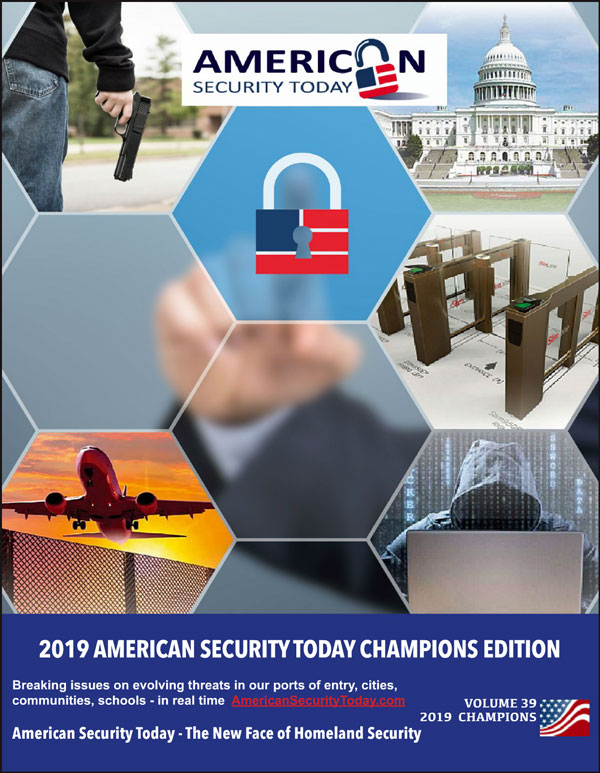 It will be your Go-To source throughout the year for ‘The Best of 2020 Products and Services‘ endorsed by American Security Today, and can satisfy your agency’s and organization’s most pressing Homeland Security and Public Safety needs.
It will be your Go-To source throughout the year for ‘The Best of 2020 Products and Services‘ endorsed by American Security Today, and can satisfy your agency’s and organization’s most pressing Homeland Security and Public Safety needs.
From Physical Security (Access Control, Critical Infrastructure, Perimeter Protection and Video Surveillance Cameras and Video Management Systems), to IT Security (Cybersecurity, Encryption, Data Storage, Anti-Malware and Networking Security – Just to name a few), the 2020 ‘ASTORS’ CHAMPIONS EDITION will have what you need to Detect, Delay, Respond to, and Mitgate today’s real-time threats in our constantly evolving security landscape.
It also includes featured guest editorial pieces from some of the security industry’s most respected leaders, and recognized firms in the 2020 ‘ASTORS’ Awards Program.
2020 ‘ASTORS’ Excellence & Government Award Recipients Also Include:
Centers for Disease Control and Prevention (CDC)

Excellence in Homeland Security
-
The CDC has provided Law enforcement and EMS who must make contact with individuals confirmed or suspected to have COVID-19 with guidance to help safeguard their health while performing their duties.
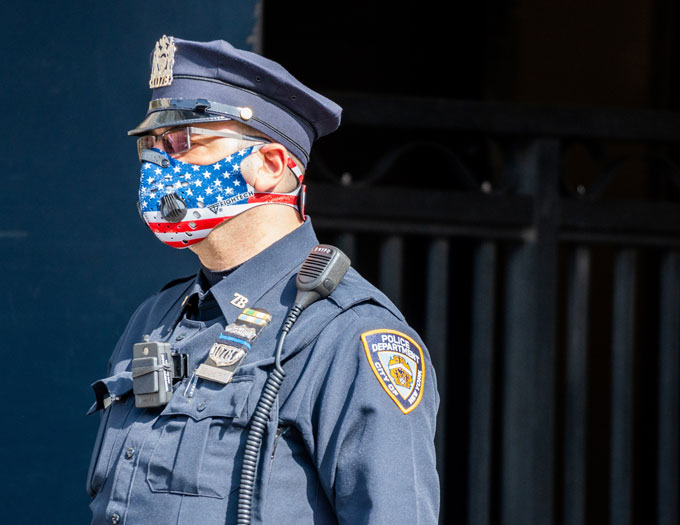
-
Different styles of PPE may be necessary to perform operational duties. These alternative styles (i.e. coveralls) must provide protection that is at least as great as that provided by the minimum amount of PPE recommended.
-
Law enforcement who must make contact with individuals confirmed or suspected to have COVID-19 should follow CDC’s Interim Guidance for EMS.
-
To Learn More, please visit the CDC’s answers to frequently asked questions about law enforcement and COVID-19 by clicking this link.
U.S. Department of Homeland Security (DHS)

Excellence in Homeland Security
-
The Blue Campaign is a national public awareness campaign, designed to educate the public, law enforcement and other industry partners to recognize the indicators of human trafficking, and how to appropriately respond to possible cases.
-
Blue Campaign works closely with DHS Components to create general awareness training and materials for law enforcement and others to increase detection of human trafficking, and to identify victims.
-
Located within the Office of Partnership and Engagement, the Blue Campaign leverages partnerships with the private sector, Non-Governmental Organizations (NGO), law enforcement and state/local authorities to maximize national public engagement on anti-human trafficking efforts.
-
Blue Campaign’s educational awareness objectives consists of two foundational elements, prevention of human trafficking and protection of exploited persons.
Department of Homeland Security (DHS) Science and Technology (S&T) Directorate

Excellence in Homeland Security
-
The COVID-19 pandemic is a global threat with life and death consequences, the enormity of which many of us have never seen before.
-
It is also a scientific challenge in need of innovative solutions and S&T is using every tool at its disposal to join the fight; including harnessing the knowledge of it’s experts on technology deployments, international collaboration, scientific breakthroughs, and support for America’s frontline workers.
-
S&T has focused its efforts on laboratory research and providing valuable resources to inform the broader response community and help keep front line responders safe.
-
Highlights of S&T’s response efforts can be found in our Battling the Invisible Enemy report.
DHS S&T Chemical Security Analysis Center (CSAC)

Excellence in Homeland Security
-
CARD, a chemical synthesis and chemical informatics centric data system (e.g. boiling point, melting point, toxicity, or spectroscopic information) containing both unclassified and classified data, is accessible from a classified website maintained on a server hosted by the Department of Defense.
-
The website is available to appropriately cleared personnel from DHS, Department of Justice (e.g. FBI), other United States Government interagency offices, and state and local agencies, and provides information on how chemicals of interest could be produced.
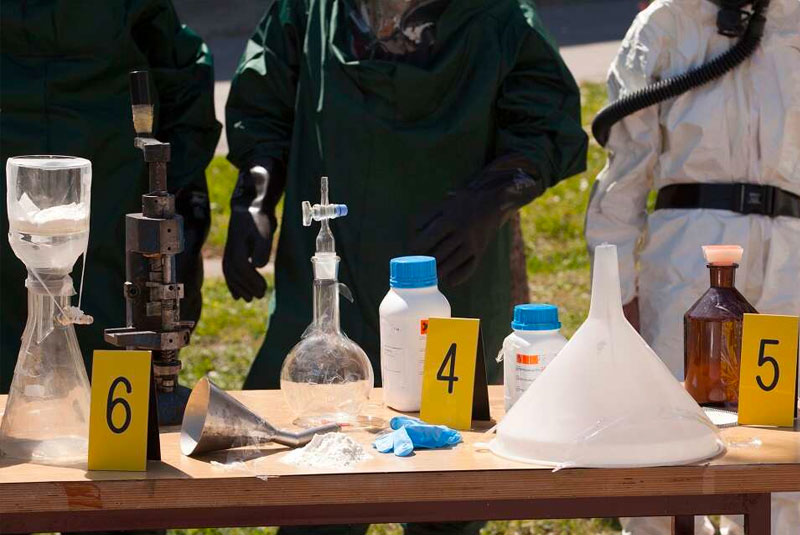
-
There is a detailed description of how each chemical is prepared to include information relevant to each step, the reagents and reactants that are needed and the conditions necessary for the reactions to take place, such as time, temperature, mixing—like a recipe.
-
If law enforcement were to discover a table full of labeled chemicals in a clandestine laboratory, they would put these names as a list in CARD to find out what the suspects are making – illicit drugs, poisons, or warfare agents.
-
CARD can be used the other way around. If police find an illicit drug or a warfare agent, they can search in the website to see what chemicals can be used to make it.
-
For example, if police capture a suspect with a vial of sarin gas (a nerve agent that can kill in minutes after inhalation), they can use CARD to determine which chemicals are used to make it. Police can then search the suspect’s illicit lab for those chemicals and obtain further evidence of wrongdoing.
Federal Protective Service in Collaboration with the Argonne National Laboratory

Best Risk, Crisis Management Solution
-
-
Modified Infrastructure Survey Tool (MIST) – COVID-19 Telematics Capabilities
-
-
DHS’s Federal Protective Service (FPS) provides integrated security and law enforcement services–including conducting security assessments and detecting and mitigating threats–to over 9,500 federal facilities. To accomplish this mission, FPS leverages the Modified Infrastructure Survey Tool (MIST), a joint solution developed in partnership with Argonne National Laboratory.

-
Argonne and FPS have continuously sought ways to improve the tool’s ability to assess, detect, and mitigating threats, and this year, no threat was more pervasive in this country than COVID-19.
-
To confront the threat that COVID-19 posed to the FPS workforce, MIST was enhanced to allow FPS Headquarters and FPS Management to track and display each federal building affected by COVID-19, and to analyze local hospitals and EMS facilities in relation to federal buildings and office locations.
-
Additionally, the map capability within MIST was expanded to allow for many additional layers, allowed FPS a granular understanding of the number of facilities impacted by the virus, and much more.
-
Ultimately, the new COVID-19 telematics capabilities offered FPS decision makers the ability to make better informed decisions on moving personnel and security equipment to best protect people and property, while ensuring safety of their staff.
DHS S&T National Urban Security Technology Laboratory (NUSTL)

Excellence in Public Safety
-
-
Hoist Rescue Gloves for Aerial Rescue
-
-
Rescue helicopter hoist operators need gloves to protect the hand that guides the hoist cable during rescue descents and ascents, using a significant amount of force to mitigate the cable swinging for situations from hurricane evacuations and dive rescues to rescuing stranded hikers on a mountain side, missions vary and no two are ever alike.
-
A partnership between S&T and Higher Dimension Materials, Inc. (HDM) resulted in an enhanced rescue hoist glove with increased flexibility, durability, and dexterity.
-
The glove design uses cushioning materials offering protection to the thumb crotch (purlicue) area, the index and little finger, and a leather guard to alleviate inconsistent glove performance when wet,” said Jones-Holt.
(See the enhanced Hoist Rescue Glove in action. Courtesy of DHS Science and Technology Directorate and YouTube.)
New York City Emergency Management

Excellence in Homeland Security
-
-
New York City Emergency Management (NYCEM), under the guidance of Commissioner commissioner of NYCEM is Deanne Criswell, a former FEMA official and head of OEM for the city of Aurora, CO, is responsible for oversight and development of the city’s emergency management plans.
-
NYCEM regularly tests plans by conducting drills and exercises, and responds to emergencies to ensure that other agencies not only follow these plans, but to foster communication amongst the responding agencies.
-

-
-
NYCEM also operates the city’s Emergency Operations Center (EOC) where city, state and federal agencies join representatives from the private and nonprofit sectors to coordinate complex responses to emergencies and disasters.
-
The agency also developed and runs the Notify NYC emergency alert program, by which citizens can sign up to receive phone and email alerts about emergencies and events happening in their neighborhoods.
-
NYCEM is also the administrator of New York City’s community emergency response teams. Each community emergency response team (CERT) is coterminous with one or more New York community boards.
-
The agency also maintains the Citywide Incident Management System which is based on the National Incident Management System.
-
Department of Homeland Security (DHS) Science and Technology (S&T) Directorate

Excellence in Homeland Security
-
The Slash CameraPole is a self-triggering platform with wireless data retrieval to detect and give warning of suspicious activities at the U.S.-Canada border, specifically a cleared stretch of land at the border that is approximately 20-feet wide, 1,349 miles long, and is referred to as the “Slash.”

-
This man-made, treeless zone is mandated by the International Boundary Commission and presents a formidable surveillance challenge, against such threats as illegal crossings, drug and illegal contraband smuggling and human trafficking.
-
Using the Slash CameraPole system, Border Patrol has been able to establish an advanced border surveillance capability where none existed before.
-
Partnering with MIT Lincoln Laboratory and several private companies to create the Slash CameraPole with numerous ingenious features, such as s olar panels and a back-up fuel cell system make it independent of the power grid, multiple infrared cameras (two long-range, one foreground, and one base imager with a fisheye lens) mean it doesn’t miss a thing.
-
An in-ground cement foundation and electrical enclosure ensures it can withstand brutal winter conditions. Should its unobtrusive appearance manage to draw the attention of would-be vandals, the Slash CameraPole is resistant to small arms fire and other tampering.
-
The Slash CameraPole also employs advanced motion detection algorithms and automated alerts designed to improve classification of targets and lower the chance of false alarms from factors such as wild animals or vegetation moving in the wind.
-
*DHS S&T Programs have now been recognized in their Fifth Annual ‘ASTORS’ Awards Program.
U.S. Immigration and Customs Enforcement (ICE)

Excellence in Homeland Security
-
ICE Enforcement and Removal Operations (ERO) is charged with enforcing the nation’s immigration laws in a fair and effective manner.

-
ERO identifies and apprehends removable aliens, detains these individuals when necessary and removes illegal aliens from the United States.
-
ERO transports removable aliens from point to point, manages aliens in custody or in an alternative to detention program, provides access to legal resources and representatives of advocacy groups and removes individuals from the United States who have been ordered to be deported.
-
ERO’s mission is to protect the homeland through the arrest and removal of aliens who undermine the safety of our communities and the integrity of our immigration laws.
Department of Justice (DOJ) Office of Personnel Management (OPM)

Best Federal Government Security Program
-
-
Federal Risk Management Process Training Program
-
-
The Federal Risk Management Process Training Program (FedRMPTP), Newly available Online – is Interagency Security Committee certified for Facility Security Officials, Federal Security Supervisors and those involved with Federal facility acquisition, construction, and renovation projects.

-
On October 19, 1995, six months after the Oklahoma City bombing of the Alfred P. Murrah Federal Building, President Clinton issued Executive Order 12977, creating the Interagency Security Committee (ISC) to address continuing government-wide security for federal facilities.
-
Prior to 1995, minimum physical security standards for non-military federally owned or leased facilities.
John Verrico

Excellence in Homeland Security
-
-
Chief of Media and Community Relations, DHS Science & Technology Directorate
-
-
John Verrico, who is also the former President of the National Association of Government Communicators, has nearly 40 years of experience as a public affairs professional in federal and state government agencies, working extensively in media, community and employee relations, with significant emphasis in science, engineering and the security fields.
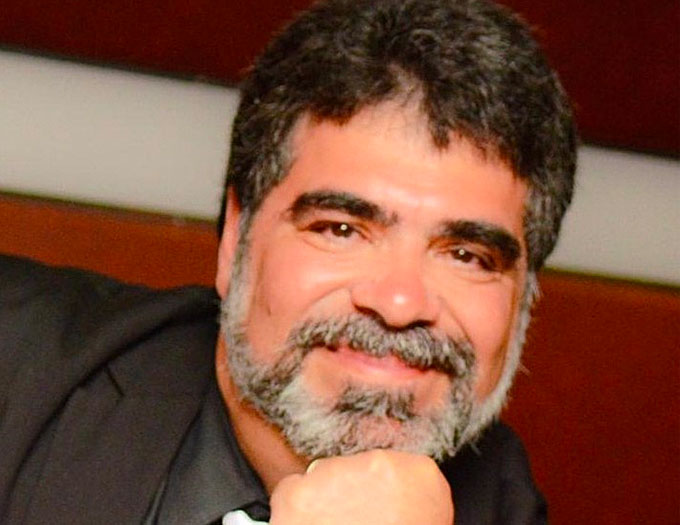
-
A retired Navy Master Chief Journalist, John’s career has been focused on helping government agencies tell their stories and share important news with the public. He takes special care to ensure government information is accessible and that complex issues are easily understood.
-
John has also worked as a freelance journalist, stand-up comic, and motivational speaker, among other fields where he learned not to take life too seriously and to experience everything life has to offer.
-
As an under-sized youth and victim of bullies, John found hope in classic monster movies and ‘B’ flicks where he learned that the little guy could win. Drawing from these lessons, John helps every day unsung heroes get recognition for their work.
-
As an international speaker and leadership coach, John helps people keep their motivational torches lit so they can face their own ‘monsters.’
Kathleen Kiernan, Ed. D

Excellence in Homeland Security
-
-
Kiernan Group Holdings CEO
-
-
Dr. Kathleen Kiernan is the Founder and CEO of national security, education, risk management and compliance firm Kiernan Group Holdings, Chair Emeritus of InfraGard National Members Alliance, and adjunct faculty member at Johns Hopkins University and Naval Post Graduate School.

-
Preparedness without Paranoia® the experience-based training in awareness, preparedness, response and recovery training for active assailant and workplace violence prevention is delivered on a learning management system.
-
GOT Preparedness® (Got Online Training), was built specifically for dispersed and remote workforces and we have trained thousands of individuals domestically and internationally.
-
She has delivered operational and educational capabilities across the globe and developed a methodological based approach to the resiliency cycle at an individual and organizational level.
Joseph Pangaro

Excellence in Public Safety
-
-
CEO at True Security Design
-
-
As the owner and CEO of Pangaro Training and Management, Joseph Pangaro, concentrates on providing the best and most up to date training programs for the Law Enforcement, School and Business communities.

-
True Security Design (TSD) law enforcement training programs are centered around supporting today’s modern professionals’ by teaching them vital skills through courses designed to engage and empower its participants.
-
A 27-year veteran police lieutenant and experienced school security director, Lt. Pangaro is uniquely qualified to provide law enforcement training programs that are centered around supporting today’s modern professionals’ by teaching them vital skills through courses designed to engage and empower its participants.
-
Pangaro Training also teaches in police academies and police agencies throughout New York, New Jersey, and Pennsylvania.
New Jersey City University

Excellence in Public
-
NJCU is one of the few programs nationally in higher education designated an Intelligence Community Center of Academic Excellence (CAE) per the Office of the Director of National Intelligence (ODNI) and a Cyber Defense CAE per the National Security Agency.

-
The Department of Professional Security Studies focuses on a student–centered, scholar-practitioner approach to education.
-
It’s mission is to facilitate access, create opportunities and provide a supportive environment for achieving academic success through learning and appreciation of subject matter, professional and personal growth and the development of identified and marketable global and disciplinary competencies.
-
The New Jersey City University (NJCU) Cybersecurity program is an interdisciplinary center for cybersecurity education, training and research, which aims to provide current and future professionals with the knowledge and skills necessary to strive and compete within the cyber security community outreach.
-
NJCU students’ foundation is built through their degree program, certificates and research opportunities. U.S. Coast Guard Auxiliary

Excellence in Public Safety
-
U.S. Coast Guard Auxiliary (CGAUX) boating courses provide instruction to boaters at all levels, from the fundamental to the advanced.

-
The agency’s courses (virtual and classroom) are taught by experienced and knowledgeable CGAUX instructors committed to the highest standards of the U.S. Coast Guard Auxiliary.
-
They are offered in two modalities: virtual, video conference with CGAUX Virtual PE Instructors, and classroom setting with CGAUX PE Instructors.
-
For a complete list of 2020 ‘ASTORS’ Award Winners, click here.
For more information about the Annual ‘ASTORS’ Awards or All Things American Security Today, please contact Michael Madsen, AST Publisher at mmadsen@americansecuritytoday.com.
AST strives to meet a 3 STAR trustworthiness rating, based on the following criteria:
- Provides named sources
- Reported by more than one notable outlet
- Includes supporting video, direct statements, or photos













